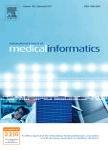版权所有:内蒙古大学图书馆 技术提供:维普资讯• 智图
内蒙古自治区呼和浩特市赛罕区大学西街235号 邮编: 010021

作者机构:Roudebush VAMC VA HSR&D Ctr Implementing Evidence Based Practice Indianapolis IN USA Indiana Univ Ctr Hlth Serv & Outcomes Res Regenstrief Inst Inc Indianapolis IN 46204 USA Indiana Univ Purdue Univ Dept Elect & Comp Engn Indianapolis IN 46202 USA Indiana Univ Purdue Univ Dept Comp Informat Technol Indianapolis IN 46202 USA IU Sch Nursing Dept Adult Hlth Indianapolis IN USA VA Nebraska Western Iowa Heath Care Syst Omaha NE USA Univ Nebraska Med Ctr Coll Publ Hlth Omaha NE USA IU Sch Med Dept Med Indianapolis IN USA
出 版 物:《INTERNATIONAL JOURNAL OF MEDICAL INFORMATICS》 (国际医学信息科学杂志)
年 卷 期:2009年第78卷第9期
页 面:618-628页
核心收录:
学科分类:1204[管理学-公共管理] 1001[医学-基础医学(可授医学、理学学位)] 0812[工学-计算机科学与技术(可授工学、理学学位)] 10[医学]
基 金:VA HSR&D Center of Excellence on Implementing Evidence-Based Practice (CIEBP) US Department of Veterans Affairs [LIP 87-012] HSRD Center [HFP 04-148]
主 题:Paper-based workarounds Electronic health record Computerized medical record Human information processing Data display
摘 要:Objective: Healthcare organizations are increasingly implementing electronic health records (EHRs) and other related health information technology (IT). Even in institutions which have long adopted these computerized systems, employees continue to rely on paper to complete their work. The objective of this study was to explore and understand human-technology integration factors that may be causing employees to rely on paper alternatives to the EHR. Methods: We conducted semi-structured interviews with 20 key-informants in a large Veterans Affairs Medical Center (VAMC), with a fully implemented EHR, to understand the use of paper-based alternatives. Participants included clinicians, administrators, and IT specialists across several service areas in the medical center. Results:We found 11 distinct categories of paper-based workarounds to the use of the EHR. Paper use related to the following: (1) efficiency;(2) knowledge/skill/ease of use;(3) memory;(4) sensorimotor preferences;(5) awareness;(6) task specificity;(7) task complexity;(8) data organization;(9) longitudinal data processes;(10) trust;and (11) security. We define each of these and provide examples that demonstrate how these categories promoted paper use in spite of a fully implemented EHR. Conclusions: In several cases, paper served as an important tool and assisted healthcare employees in their work. in other cases, paper use circumvented the intended EHR design, introduced potential gaps in documentation, and generated possible paths to medical error. We discuss implications of these findings for EHR design and implementation. Published by Elsevier Ireland Ltd